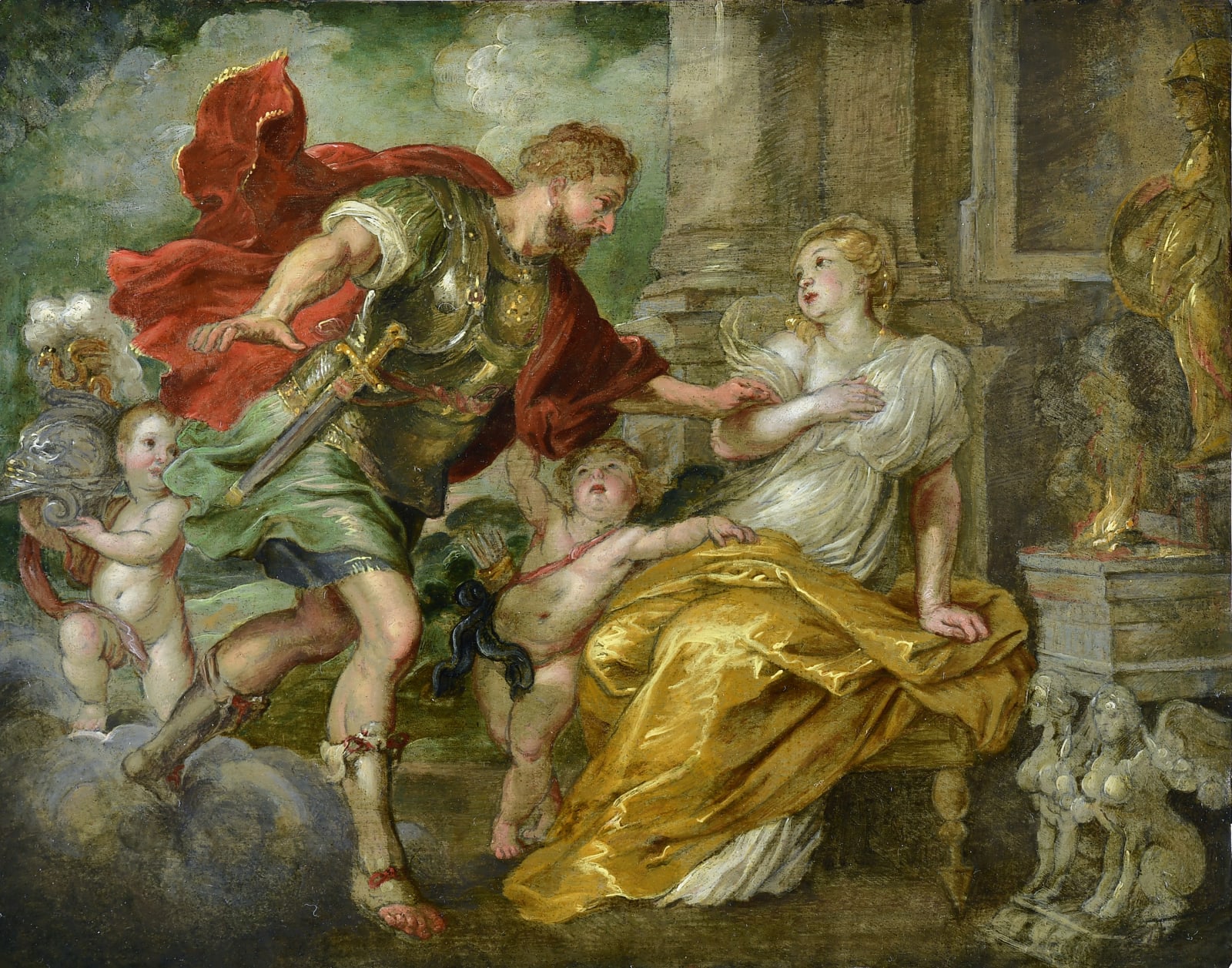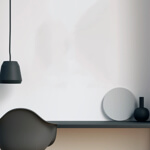Victor Wolfvoet the Younger (Antwerp 1612 - 1652)
A rediscovered masterpiece by one of Rubens' lesser known collaborators, this brilliant little oil sketch was last signaled in 1655 in the estate of an Antwerp notary, before resurfacing over 350 years later in a French private collection.
Victor Wolfvoet the Younger was born in Antwerp in 1612. His father, Victor I Wolfvoet, was a painter and art dealer whose oeuvre consists of only a few known works. The younger Victor may have studied with his father at an early age; it is more certain that he later on worked in the studio of Peter Paul Rubens, where he assisted in the production of works by the workshop and painted several compositions after or inspired by works by the great Antwerp master. Wolfvoet married in 1639 and only became a member of the guild of St Luke in 1644/45. According to some, this accounts for his rather limited known oeuvre. However, as recent research on the artist had begun to shed some more light on his life and work, is appears that many works that were once attributed to Wolfvoet’s contemporaries might be, in fact, attributed to him.
Like many of his fellow Antwerp artists, Wolfvoet also engaged in collaborative projects, working with several leading flower painters by painting the cartouches in their flower garlands. A good example of such a work can be seen in a fine work currently in a private collection in Antwerp, where a scene with a Virgin and Child painted by Wolfvoet is surrounded by a very sumptuous flower garland by Jan van Kessel, who also signed the work.
Besides as an artist, Wolfvoet, like his father, was also active as an art dealer. An inventory of his estate after his death lists over seven hundred works, including twenty oil sketches by Rubens (amongst which were several designs for the ceilings in the Antwerp Jesuit church). Interestingly, the inventory also mentions several copies after Rubens’ sketches, some clearly denoted as being in Wolfvoet’s own hand (such as the pair now in the Mauritshuis, The Hague).
This is also the case in the present painting, "Mars and Rhea Silvia", depicting the rape of the Vestal Virgin by Mars, the Roman god of war, resulting in the birth of Romulus and Remus - the founding fathers of Rome. Rubens painted the subject ca. 1617/20 on a large format; the painting - as well as its modello - are now kept in the Liechtenstein Collection. As the present picture leans closer to the modello - and has itself many characteristics of an oil sketch - Wolfvoet must have worked after the modello, which - like most - had most probably remained in Rubens' studio, sometime in the 1630's.
The cooler and crisper tonality of the painting however is much different to Rubens' work, as are many details that Wolfvoet omitted or added himself. It is painted on Wolfvoet's preferred medium, a small, very thin copper plate, which allows for a transparent and brilliant effect.
Interestingly, the painting seems to have remained in Wolfvoet's possession his entire life, as it is listed among the contents of his estate in 1652. Three years later, it reappears in the estate of the notary Bartholomeus van den Berghe, meaning the latter had acquired it in the meanwhile. It then vanished until reappearing in a French private collection in 2020, being described as "Flemish school, after Rubens". It was subsequently acquired by the gallery and recognized as the lost work described in the Corpus Rubenianum as the first copy after Rubens' "Mars & Rhea Silvia".
Provenance
Estate of the painter and art dealer Victor Wolfvoet, Antwerp, 24-26 October 1652, no. 452, as 'Eenen schetse na Rubens van Mars ende Venus op panel in lyste';
Estate of the notary Bartholomeus van den Berghe I, Antwerp, 18-27 November 1655, as 'een schetse naer Rubens van Mars ende Venus';
Private collection, Paris, until 2020.
Literature
We are grateful to Dr. Bert Schepers of the Rubenianum, Antwerp, for confirming the attribution to Victor Wolfvoet the Younger.
Publications
E. Duverger, Antwerpse kunstinventarissen uit de zeventiende eeuw, Vol. 6: 1649 - 1653, Paleis der Academiën, Brussels, 1992, 24-26 October 1652, as "N°452. Eenen schetse na Rubens van Mars ende Venus op panneel in lyste";
E. Duverger, Antwerpse kunstinventarissen uit de zeventiende eeuw, Vol. 7: 1654 - 1658, Paleis der Academiën, Brussels, 1993, 18-27 November 1655, as "een schetse naer Rubens van Mars ende Venus";
R. Baumstark & G. Delmarcel, Corpus Rubenianum Ludwig Burchard Part XIII, Subjects from History 2. The Decius Mus Series, Brepols, Turnhout, 2019, 214, no. 10c, as the first copy with unknown whereabouts and dimensions.
- X
- Tumblr





